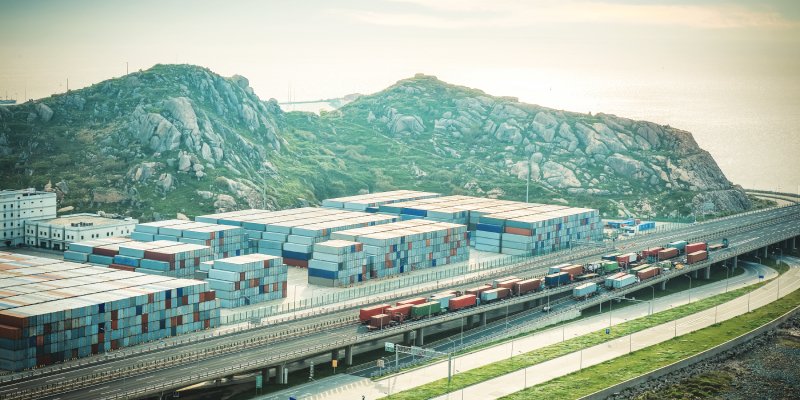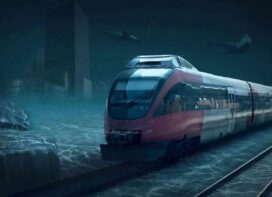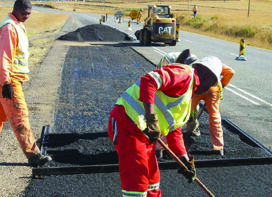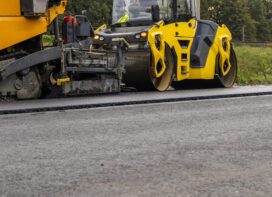The discussion about logistics, be it cargo or passenger, is heard in every boardroom and stateroom. It is a pressing concern for a developing economy and growing market. Improving operational efficiency for Logistics was discussed by a panel of experts during TrafficInfraTech Expo 2021, with Infrastructure, Multi-modal parks and Technology being the main focus.
Within the Indian growth story, there is increasing attention being paid to aspects that can help the economy move forward, with logistics being one of the primary movers. There exist certain inefficiencies in this sector that can cause issues for manufacturers, retailers, and consumers, but a well-organised sector can change the narrative around this.
Infrastructure
Multi-modal parks could be the first step in integrated infrastructure development. When looking at railways, road, waterways – inland and coastal, and airways, efficiency can only be increased through interconnectivity and seamless movement between different modes of transport. It was mentioned that multi-modal parks would have at least two forms of transport, with easy switching between all.
 Vaibhav Dange, Expert, Mobility Space, stated: “We need to look at logistics not only from the perspective of transporting goods from one place to another but to look at moving goods and people seamlessly, efficiently bringing in operational efficiency in terms of time and delivery. Whole objective of the PM Gati Shakti program is to bring in that efficiency, bring in an integrated approach and make sure that the whole system works efficiently to bring in excellence within logistics.”
Vaibhav Dange, Expert, Mobility Space, stated: “We need to look at logistics not only from the perspective of transporting goods from one place to another but to look at moving goods and people seamlessly, efficiently bringing in operational efficiency in terms of time and delivery. Whole objective of the PM Gati Shakti program is to bring in that efficiency, bring in an integrated approach and make sure that the whole system works efficiently to bring in excellence within logistics.”

Talking of Gati Shakti- National Master Plan for Multi-modal Connectivity, Amrit Lal Meena, Special Secretary (Logistics), Ministry of Commerce and Industry pointed out that the plan developed by Bhaskaracharya Institute for Space Applications and Geoinformatics, has layered all our existing infrastructure, infrastructure that is in the pipeline, and any future plans, to form part of that national master plan. “The objective is that any asset infrastructure which is going to be created must add to the logistics efficiency of the country.”
This also raised the concern of first mile and last mile connectivity. Most conversations about last mile connectivity happen with passengers in mind, but cargo is often an afterthought. Due to poor planning, and restrictions on large cargo movements during certain timings, deliveries can often be delayed by 24 hours while covering short distances.
 According to S.P. Singh, Joint Secretary (IAHE & Logistic), Ministry of Road Transport and Highways, the government is focusing on the first mile and last mile connectivity through dedicated port connectivity roads, greenfield expressways, access-controlled expressways, economic corridors, flyovers for congestion points, ring roads, and feeder roads.
According to S.P. Singh, Joint Secretary (IAHE & Logistic), Ministry of Road Transport and Highways, the government is focusing on the first mile and last mile connectivity through dedicated port connectivity roads, greenfield expressways, access-controlled expressways, economic corridors, flyovers for congestion points, ring roads, and feeder roads.
The Hub and Spoke system, which is being implemented in Germany, was brought up as a reference for building warehousing around cities. Built on a smaller scale, this aims to distribute goods without building distribution centres within the cities. This can lower the number of commercial vehicles entering the city, which can impact pollution levels as well.
Systems Integration
As a large amount of time is wasted by shifting between different modes of transport, it is becoming a pressing concern to relook at this aspect of logistics. A concerted effort is underway to improve integration between departments and bodies to provide seamless transport. Certain initiatives are examples of this integration – GST has reduced waiting times at the border, Fastag at the tolls and RFID tags are used to track EXIM containers moving through the ports and the roads.
Paperless customs clearance was also brought up as an illustration of a move towards uninterrupted systems. The limitations of the implementation were raised, but these examples of system integration were given as an acknowledgement of the shift towards creating a unified logistics platform, with a single window to handle all forms of logistics.
Within Gati Shakti, there is a provision to ensure that any transport network being developed should be in an integrated manner. If transport systems are created in tandem with the traffic requirements of those sectors, it would prevent isolated developments and allow for the uniform movement between different forms of transport.
A question was raised about using metro as a means of carrying cargo. Last mile connectivity is always based on the road network, but there could be integration of rail into this transport plan. This could possibly increase cost efficiency of the whole process, leading to the conclusion that multi-modal transport might require an overlap between cargo and passenger.
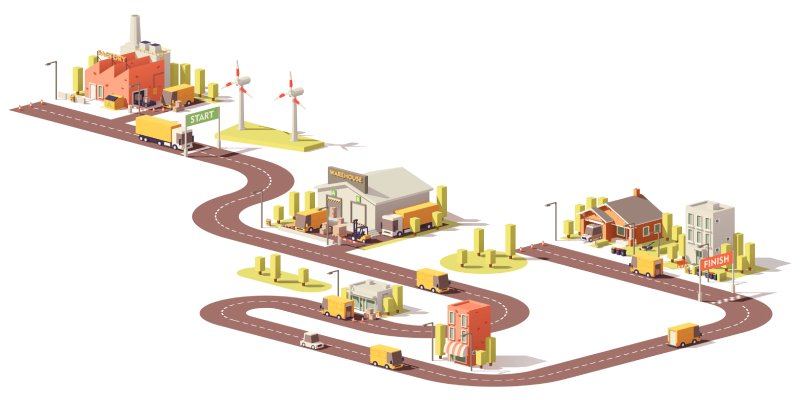
Technology
Technology has a considerable role to play in increasing efficiency of systems. A fact which is often overlooked is that ecommerce companies are also logistic companies, as they transport a large volume of goods on a daily basis. The backbone behind their functioning is technology.
Using Artificial Intelligence to reduce human intervention is being implemented in certain western countries for dealing with paperwork. Along with this, the next step is moving towards intelligent warehouse and intelligent freight. As seen with passenger travel, there is integration and cargo tracking through apps which can pinpoint the mode of transport and check how the cargo will reach its destination in the most efficient manner.
With the advent of 5G, this integration and tracking will get a boost as it will allow for larger amounts of data and less latency issues. The development of Internet of Things (IoT) should allow customers to leverage the networks for real time tracking and monitoring.
 Nikhil Alulkar, Sr Vice President & Head – India, SAARC, Tech Mahindra stated that 5G is going to disrupt logistics and IT, making every phone an IOT device. “The phone carried by a truck driver will become a IOT device and that will connect me to the cloud where I will have full visibility of the goods being transported, abstracting all underlying multi-modal transportation.”
Nikhil Alulkar, Sr Vice President & Head – India, SAARC, Tech Mahindra stated that 5G is going to disrupt logistics and IT, making every phone an IOT device. “The phone carried by a truck driver will become a IOT device and that will connect me to the cloud where I will have full visibility of the goods being transported, abstracting all underlying multi-modal transportation.”
Another is the creation of an integrated platform that the user, the planner and the network operator could have access to. This would offer integrated information on one dashboard, with optimisation on the costs across various modes of transport. It would detail the congestion on the routes and present different options of a modal mix of transport.
Human resources
Although stakeholders might be looking at improving efficiency in the logistics sector, work still remains to be done when it comes to training and management of the personnel involved in the industry.
There are limited programs and training modules in the country which are specific to logistics. Consider the role of the driver, which has different requirements for different forms of transport machinery. A person driving a container full of oxygen requires different skill training as compared to a person driving a container full of water.
 Captain. T. S. Ramanujam, CEO, Logistics Sector Skill Council, Chennai said, “I think for the past 70 years, logistics has regrettably not found any kind of mention in schools, ITI, Polytechnic, higher educations, institutions, nothing whatsoever – you won’t find any graduate program. In 2019, we launched for the first time in this country what’s called a degree apprenticeship program, which is now been accepted as the matter of policy in the National Educational Policy 2020. We are also requesting that driver training be included in ITI’s so that we catch the professionals at a young age. We would also request that all multi-modal logistics parks embed a skill training centre.”
Captain. T. S. Ramanujam, CEO, Logistics Sector Skill Council, Chennai said, “I think for the past 70 years, logistics has regrettably not found any kind of mention in schools, ITI, Polytechnic, higher educations, institutions, nothing whatsoever – you won’t find any graduate program. In 2019, we launched for the first time in this country what’s called a degree apprenticeship program, which is now been accepted as the matter of policy in the National Educational Policy 2020. We are also requesting that driver training be included in ITI’s so that we catch the professionals at a young age. We would also request that all multi-modal logistics parks embed a skill training centre.”
Collaboration
The panel discussion moved to an important aspect of creating an efficient logistics sector, which is streamlining the regulatory framework. Currently, different modes of transport are regulated by different acts – different ones for air, rail, road – which increases lead time for transport organisations. To enable seamless movement might require a rationalisation of these regulations as well.
Collaboration between states, central government bodies and industry would be crucial in resolving any concerns that might arise within the logistics sector. Industry associations and private players were invited to engage with the government on problems that they are facing, so that the import-export sector might develop.
State involvement would be required to improve logistics efficiency, such as through the surveys that have been conducted for the past few years. 200 gap areas have been identified across 36 states and Union Territories. Identifying these shortcomings is important in finding ways to refine the process. To this effect, the central government has created a dedicated Logistics Department with the aim of lowering costs and increasing efficiency.
Land and Costs
A significant amount of the logistics cost comes from a heavy dependence on road transportation. It was said that about 60-65% of the country’s transport comes from road, which is significantly higher than other countries where rail and water transport is used.
Another substantial cost is the warehousing cost. Through the logistics action plan, there is an attempt to build a uniform policy for logistics parks and terminals, so that the entrepreneur who is interested in its development finds it easy to benefit from government policies and programs.
 Prakash Gaur, CEO, National Highway Logistics Management Limited pointed out: “When we are setting multi-modal logistics parks, we had certain parameters while locating; it is not just the land per-se. We have to build somewhere, but not unless it becomes a part of the eco-system – what kind of industry I have, does that industry require that kind of logistics facility in the vicinity? Because I am becoming a backend supporter and value chain to that industry helping them to reduce the cost.”
Prakash Gaur, CEO, National Highway Logistics Management Limited pointed out: “When we are setting multi-modal logistics parks, we had certain parameters while locating; it is not just the land per-se. We have to build somewhere, but not unless it becomes a part of the eco-system – what kind of industry I have, does that industry require that kind of logistics facility in the vicinity? Because I am becoming a backend supporter and value chain to that industry helping them to reduce the cost.”
This is where land becomes a concern, as availability of land around cities is a problem for development of logistic parks and terminals. It was suggested that this might become a part of the NH land acquisition plan to add to the infrastructure.
Gaur added: “The government authority will be limited as an enabler of the services. We will be providing the land, we will be providing the external infrastructure connectivity, a minimum two rail and road modes depending on Inland waterways. Other infrastructure like water, power – all approvals which are the major challenges for any private developers to come and setup. So all things we will put in place and then invite private developers to take it and provide the best services. We have the model concessioner agreement already approved by the Ministry and we will be inviting tenders. Overall target is 35 multi-modal logistics parks as approved by the cabinet committee of economic affairs.”
Passengers
Not to be forgotten is the passenger movement, as the metro development across the country has led to a large amount of focus on passengers. The development of inter-modal stations becomes important in this case, which also feeds into last mile connectivity. The aim should be to reduce friction-factor within an area and increase accessibility.
Additionally, forms of transport like ropeways and alternate mobility solutions might be required. There are moves in states like Uttarakhand, Himachal Pradesh, Arunachal Pradesh, Manipur, etc. to develop new systems that are meant as medium scale transport modes for lower volumes.
In short, going forward, government bodies and the industry must move in tandem. Increasing efficiency will come when the obstacles are identified and removed through this collaboration.
 TrafficInfraTech Magazine Linking People Places & Progress
TrafficInfraTech Magazine Linking People Places & Progress
